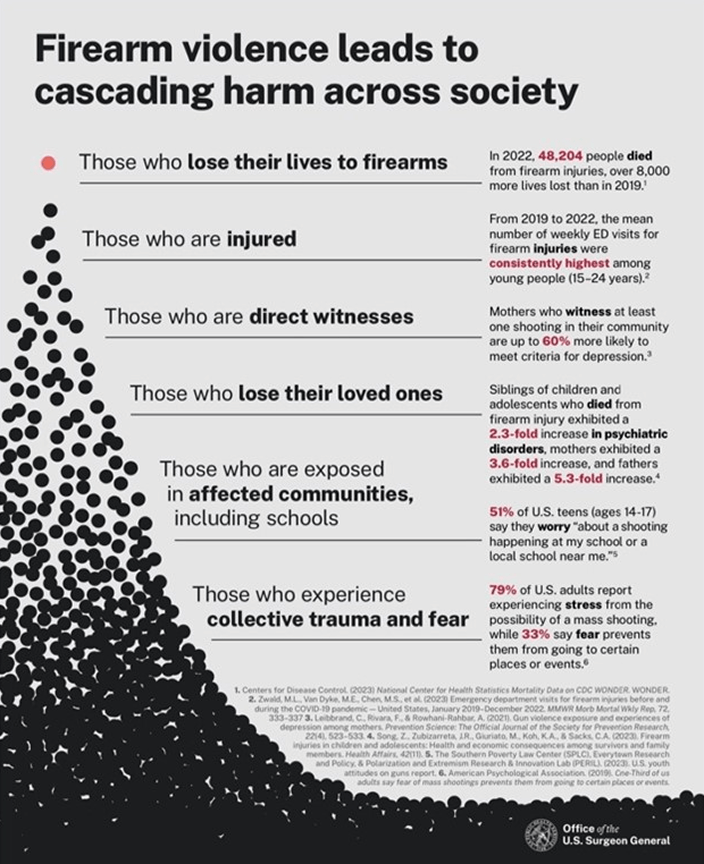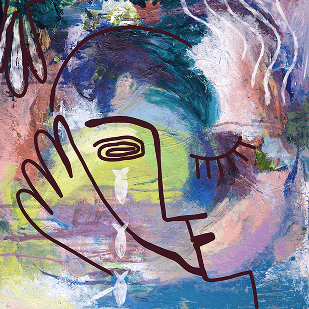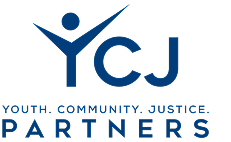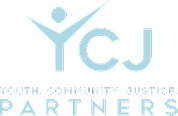Therapy
Youth affected by murder
Violence as a Public Health Crisis
In June 2024, Surgeon General Vivek Murthy declared gun violence a national public health crisis. In his advisory, Dr. Murthy stated that firearm related violence and its immediate psychological ramifications on victims and bystanders have severely compromised public health, leading to “loss of life, unimaginable pain, and profound grief for far too many Americans.”

Survivors of Murder
A murder is an unnatural death, and no ordinary rules apply. The death of a loved one to murder can be uniquely agonizing, with intense grief experienced for years, a decade, or even a lifetime (A Grief Like No Other, 2006).
After a murder, survivors often report that the loss is particularly unbearable because their loved one’s life was violently taken away due to the actions and choices of another person. In some (even many cases), the perpetrator of the violence was known to the loved one, perhaps a childhood friend, neighbor, or partner.


Advocate for Survivors of Homicide
Dr. Christine Gerchow has dedicated her career to supporting young people and their families, several who endure life without a loved one who was murdered. Over the years, Dr. Gerchow became discouraged by the limited number of providers able to provide services for these children, teens, and adults as they walked through uniquely searing and disenfranchising grief.
Dr. Gerchow collaborates with District Attorneys’ offices, Trauma Recovery Centers (TRCs), and schools.
SERVICES FOR THOSE AFFECTED BY MURDER
We aspire to offer dignified, destigmatizing, and nurturing individual and group therapeutic support for survivors of homicide, especially surviving mothers, fathers, siblings, and children. Our therapy services endeavor to be unrestricted by session numbers, start dates (i.e., “participants must enter treatment within three years of the event”), or sequences.
Our Services:
- Are offered at a “when the time is right for you” entry point
- Are invitations. Community members decide what calls to their mind, body, and spirit.
- Are developmentally attuned. Grief for a six-year-old may look different than it does for a 16-year-old.
- Recognize the social determinants of grief. Faith, historical and collective trauma, and racialized and gendered aspects of grief, among others, are held with reverence and compassion.
During treatment, children, teens, and adults may:

Utilize rituals, spoken word, journaling, art, movement, fellowship and other activities designed by survivors and in the order preferred by survivors
Address the complexity of the loss of life to gun violence; and as appropriate, address components related to community violence
Manage homicide event-related reminders (which could bring about posttraumatic stress reactions)
Learn to label and cope with distress reactions
Create or review safety plans
Manage loss reminders (which could bring about grief reactions)
Learn about bereavement and grief experiences that can happen after homicide
Address traumatic expectations, which can undercut positive aspirations for the future
Recognize the connection between posttraumatic stress and grief reactions that can arise following the loss of a loved one to murder
- We believe children are part of families, extended families, and communities. As such and as appropriate, we work closely with family members, faith-based communities, educators, coaches, and other individuals central to the child’s growth and development.
- For children and adolescents, an additional treatment goal may be to support their recovery from lost developmental opportunities. For instance, enhancing their capacity to do schoolwork or communicate effectively with loved ones.
During treatment, children, teens, and adults may:
Utilize rituals, spoken word, journaling, art, movement, fellowship and other activities designed by survivors and in the order preferred by survivors
Address the complexity of the loss of life to gun violence; and as appropriate, address components related to community violence
Manage homicide event-related reminders (which could bring about posttraumatic stress reactions)
Learn to label and cope with distress reactions
Create or review safety plans
Manage loss reminders (which could bring about grief reactions)
Learn about bereavement and grief experiences that can happen after homicide
Address traumatic expectations, which can undercut positive aspirations for the future
Recognize the connection between posttraumatic stress and grief reactions that can arise following the loss of a loved one to murder
Recognize the connection between posttraumatic stress and grief reactions that can arise following the loss of a loved one to murder

- We believe children are part of families, extended families, and communities. As such and as appropriate, we work closely with family members, faith-based communities, educators, coaches, and other individuals central to the child’s growth and development.
- We believe children are part of families, extended families, and communities. As such and as appropriate, we work closely with family members, faith-based communities, educators, coaches, and other individuals central to the child’s growth and development.


